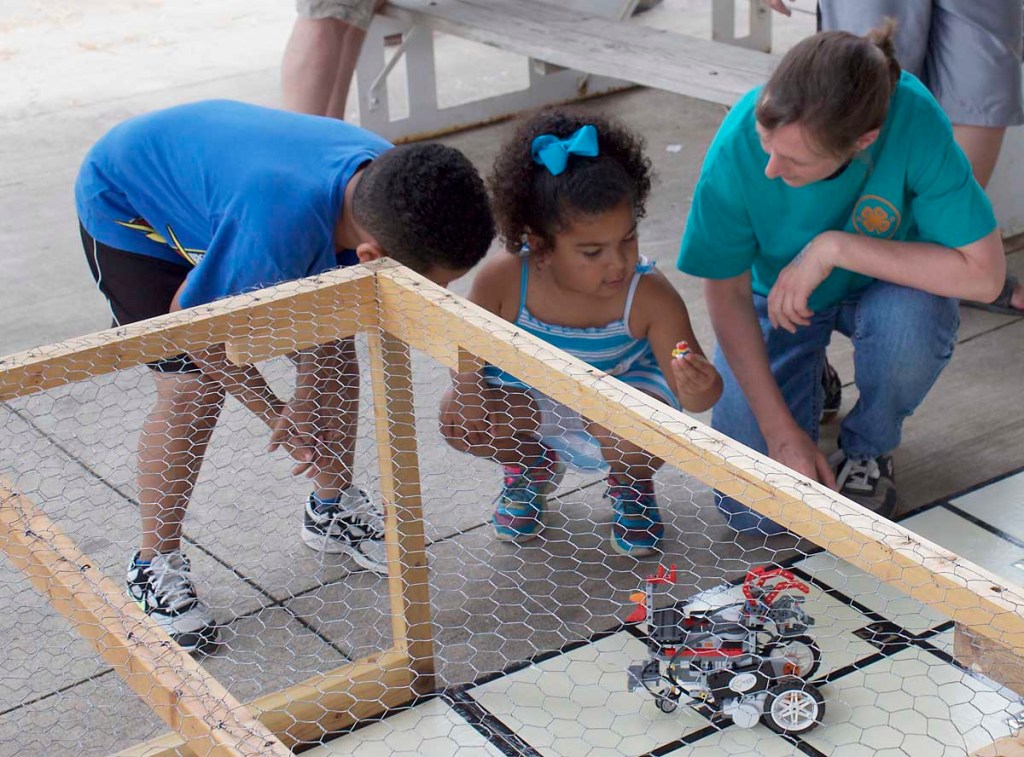Students, robotic chicken rescue county fair tradition
Published 5:15 pm Thursday, July 16, 2015

- Allyson Bailey shows a couple of young fairgoers the robotic chicken used for the Marion County Fair's "Chicken Poop Bingo" this year. Iowa fairs were hit with a statewide ban on poultry shows due to avian flu.
KNOXVILLE, Iowa — When avian flu devastated Iowa’s chicken industry earlier this year, officials took the unusual step of banning poultry shows at the Iowa State Fair and the fairs that take place at counties statewide. And it put rural Marion County — southeast of Des Moines — in a tight spot.
The featured “Chicken Poop Bingo” has been a growing attraction at the Marion County Fair for the past couple of years. It’s simple enough: A chicken is placed on a board marked off with numbered squares. The person who purchased the ticket for the square the chicken eventually marks wins a cash prize.
Organizers didn’t want to stop the game’s momentum. It took a bit to catch on, and a pause would hurt future years. But the ban was absolute. No chickens.
So several youths turned to technology to save the game.
“One of the people at the extension office came up with the idea of solving the problem using a robot,” said student Cael Roberts. “So we had a meeting. Three people came. I was one of them.”
The solution wound up being a robotic chicken made of Lego parts. Iowa students participate in the First Lego League, which uses simple robots and Legos to perform a series of tasks. Getting a robot to act like a chicken didn’t turn out to be that hard.
“We just built the base design with Lego materials and it was trial and error,” Roberts said. “Then I programmed it, with more trial and error.”
The creation floored people when it made its debut at the county fair.
“I couldn’t believe it when they came in here with this deal,” said Craig Kaisand.
Chrys Bregar said the robot chicken seemed obvious once someone suggested it, but the students who built and programmed it ran with the idea. They used spare parts to make the robot look more like a chicken and used a small Lego figure as the marker.
“I knew they’d be able to do it,” she said. “But they really surpassed what I expected.”
Roberts was pleased with the reaction. The first day didn’t draw as much of a crowd as hoped, but by the second day word had spread and people came to see the substitute chicken.
“A lot of people really liked it. We sold out,” he said.
The bingo area is a poultry paradise. Children could get foam rubber eggs, “I’m a good egg” temporary tattoos and “I [heart] eggs” stickers. And more than a few were curious about the chicken that looked nothing like any they had ever seen.
Adults had fun with the idea as well, laughing and cracking jokes about the ease with which this year’s chicken could be handled.
“It’s a lot cheaper to feed,” said Craig Kaisand.
“It’s a lot easier to clean up after,” shot back Allyson Bailey.
It’s not clear whether the robot chicken will make appearances at future fairs. If the threat of avian flu recedes, it’s likely a live chicken will return. If not, the robot will be ready.
Bregar is betting it won’t be this one, though.
“It’s probably going to wind up like a lot of Lego creations,” she said, “broken up for pieces.”
Since it emerged in the United States back in December, the avian flu has wiped out millions of birds – mostly egg-layers – in several states like Iowa and is directly linked to the increase in egg prices nationwide, as reported by the U.S. Department of Agriculture in a June update. The outbreak has caused local and state fairs in places like Indiana and Michigan to cancel poultry shows for fear of spreading the disease.
While it poses no known risk to humans, avian flu can mean disaster for farmers who make a living from their fowl.
Milner writes for the Ottumwa (Iowa) Daily Courier.




